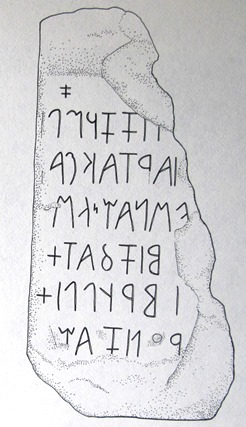Dedicatory inscription to the goddess Artemis

Short dedicatory inscription to the goddess Artemis. It is a bilingual text in Lydian and Greek engraved on a pedestal. Found in Sardis in 1913, near the temple of Artemis. The Lydian inscription is sinistroverse while the Greek one is dextroverse. Note the different rendering of the patronymic: the Lydian version, Pakiwas, could be interpreted as the form Bacchus, probably originally Lydian or Phrygian. (Source: Annick Payne, Jorit Wintjes, Lords of Asia Minor: An Introduction to the Lydians, Wiesbaden 2016, 82).
Lydian:
nannas pakiwalis artimuλ
Nannas, (son) of Pakiwas, for Artemis
Greco:
nannas dionysikleos artemidi
Nannas, (son) of Dionysikles, for Artemis
Stele from Sardis A I 3

1 ] s[
2 ]x i s s r m l i [s]
3 ]? a r t a k ś a x
4 ]v ã n a λ N d ã [ν]
5 ] b i s f a t x [?]
6 ] i b r u l l i s [?]
7 ]r o? l i s a λ a?[?]
The fragmentary stele was published in 1975 by Gusmani (Neue epichorische Schriftzeugnisse aus Sardis). At l. 3, the personal name Artakśa [ssa ...] can be reconstructed, that can only be the name of the king of the Persian Empire. The name of Artaxerxes allows the dating of this document and other funerary inscriptions of the same nature. It is with all probability Artaxerxes III Ochos (358-338), although it could be even Artaxerxes II Mnemone (404-358).